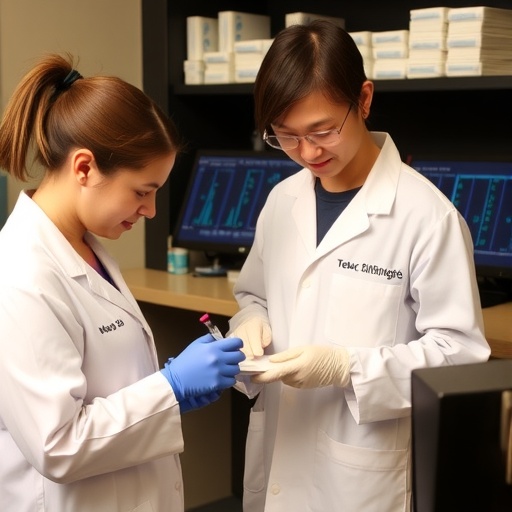Expansion can help US hospitals prepare for possible second wave

Credit: Florida Atlantic University
Rural hospitals are more likely than urban facilities to have access to telehealth, a once-underused service that now is playing a key role in treating coronavirus patients, according to research by two health administration professors in Florida Atlantic University’s College of Business.
Neeraj Puro, Ph.D., and Scott Feyereisen, Ph.D., say the research can help U.S. hospitals understand the extent to which they are prepared for another wave of the pandemic. The work has been published in The Journal of Rural Health, one of the leading peer-reviewed publications on rural health issues.
Telehealth connects patients with doctors by computer or telephone when in-person appointments are not possible or safe from disease transmission.
“It’s a relatively easy way to expand access,” Feyereisen said. “More health care access is good. It’s one of the goals of the system.”
Having telehealth provides hospitals the ability to expand their service offerings in multiple ways, according to the report. For example, telehealth services have the potential to improve outcomes for high-risk obstetric patients in rural communities, while telehealth facilitated the use of anti-microbials in rural areas where infectious disease physicians were not available. Still, barriers such as insurance restrictions and technology limitations remain in place, preventing the widespread use of the service.
Puro and Feyereisen concluded that talking with doctors remotely is an important part of improving rural health care. The odds of hospitals to provide telehealth services vary, with Minnesota, Iowa, South Dakota, North Dakota, Nebraska, Missouri and Kansas leading the way among the nine regions designated by the U.S. Census.
What’s more, coastal states, including New York, Florida, California and Washington, generally lacked the capability to provide e-services in rural areas, with telehealth specifically in short supply. In addition, telehealth capabilities are more common in hospitals that belong to a system and benefit from the economies of scale.
“Not only are rural populations some of the most vulnerable to diseases such as COVID-19, they might be called upon to provide back-up service to overflowing urban hospitals in the event such systems are overwhelmed,” the report stated. “Going forward, telehealth is likely to play a large role in diagnosing patients, particularly in coming months as long as social distancing is a preferred strategy for preventing the spread of COVID-19. This virus might also become seasonal, and until a vaccine is introduced, telehealth will likely be increasingly integral to diagnosis and treatment.”
The research also found that telehealth capabilities are predictably available in larger hospitals as well as teaching hospitals, and the professors say policymakers would be wise to provide support to smaller facilities.
The study of 3,268 hospitals is based on 2017 data from the American Hospital Association survey, Area Health Resource Files and Medicare cost reports.
###
About Florida Atlantic University:
Florida Atlantic University, established in 1961, officially opened its doors in 1964 as the fifth public university in Florida. Today, the University, with an annual economic impact of $6.3 billion, serves more than 30,000 undergraduate and graduate students at sites throughout its six-county service region in southeast Florida. FAU’s world-class teaching and research faculty serves students through 10 colleges: the Dorothy F. Schmidt College of Arts and Letters, the College of Business, the College for Design and Social Inquiry, the College of Education, the College of Engineering and Computer Science, the Graduate College, the Harriet L. Wilkes Honors College, the Charles E. Schmidt College of Medicine, the Christine E. Lynn College of Nursing and the Charles E. Schmidt College of Science. FAU is ranked as a High Research Activity institution by the Carnegie Foundation for the Advancement of Teaching. The University is placing special focus on the rapid development of critical areas that form the basis of its strategic plan: Healthy aging, biotech, coastal and marine issues, neuroscience, regenerative medicine, informatics, lifespan and the environment. These areas provide opportunities for faculty and students to build upon FAU’s existing strengths in research and scholarship. For more information, visit fau.edu.
Media Contact
Paul Owers
[email protected]
Related Journal Article
http://dx.





